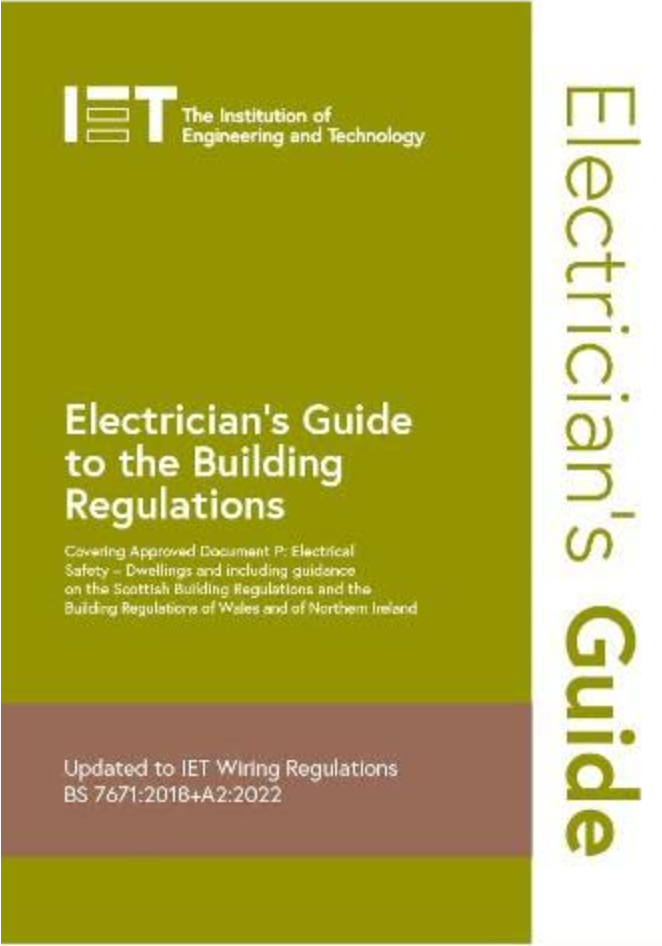
Understanding Part C of Building Regulations and Its Implications for Electrical Installations
Introduction
Building regulations are a crucial aspect of construction and development in many countries. These regulations are designed to ensure that buildings are safe, energy-efficient, and environmentally friendly. In the United Kingdom, the Building Regulations 2010 (as amended) provide comprehensive guidelines for various aspects of construction, including structural integrity, fire safety, and accessibility. Part C of these regulations is particularly important as it pertains to the safety of buildings in relation to contaminants and moisture, which can have a significant impact on electrical installations.
In this blog post, we’ll explore the key aspects of Part C of the Building Regulations and how they relate to electrical installations.
Part C: Site Preparation and Resistance to Moisture
Part C of the Building Regulations is concerned with “Site Preparation and Resistance to Moisture.” Its primary objective is to prevent the entry of moisture and contaminants into the building and protect it from the adverse effects of these elements. While this part primarily deals with issues like dampness and water penetration, it has a direct bearing on electrical installations within the building.
1. Protection of Electrical Installations from Moisture
Moisture can be a significant threat to electrical installations. It can lead to short circuits, corrosion of conductors, and electrical shocks. To protect electrical systems from moisture, Part C specifies requirements for the damp-proofing of walls and floors. Proper damp-proof membranes and materials must be used to create a barrier that prevents moisture from seeping into the building.
For electrical installations in areas prone to moisture, such as bathrooms, kitchens, and outdoor spaces, it’s essential to follow Part C guidelines to ensure the long-term safety and functionality of the electrical systems.
2. Ventilation
Proper ventilation is another important aspect of Part C. Adequate ventilation is crucial for preventing the buildup of moisture and contaminants in enclosed spaces. In buildings, where electrical panels or distribution boards are located, good ventilation helps dissipate heat generated by these components, preventing overheating and potential fire hazards.
3. Insulation
Insulation plays a dual role in the context of Part C. Firstly, it helps to maintain a comfortable and energy-efficient indoor environment by preventing heat loss or gain. Secondly, insulation can reduce the risk of condensation forming on electrical components, which can occur when warm, moist air comes into contact with cold surfaces.
Part C stipulates specific requirements for insulation, ensuring that it is installed correctly and meets energy efficiency standards. This indirectly affects electrical installations by creating a more stable and suitable environment for their operation.
4. Avoiding Contaminants
In addition to moisture, Part C also addresses the ingress of contaminants, such as radon gas, which can be harmful to both occupants and electrical equipment. Proper sealing and construction techniques are mandated to prevent the entry of these contaminants.
Conclusion
Part C of the Building Regulations is a critical component of ensuring the safety and longevity of buildings. While its primary focus is on moisture and contaminants, its implications for electrical installations are clear. By adhering to the guidelines outlined in Part C, builders and electrical professionals can create environments that protect both people and electrical systems.
For anyone involved in the construction industry or homeowners planning electrical installations, it is essential to consult Part C of the Building Regulations and work closely with qualified professionals who understand how to implement its requirements. Doing so will help ensure that electrical installations remain safe, reliable, and durable in the face of moisture and other environmental challenges. Ultimately, compliance with Part C contributes to the overall quality and sustainability of a building.
Take the course and become Part P qualified with the City & Guilds 2393-10 qualification. Only £198.00 Inc VAT.
The City & Guilds 2393-10 qualification holds immense value for electricians seeking to enhance their skills and excel in their careers. In today’s rapidly evolving technological landscape, where electrical installations and regulations are becoming increasingly sophisticated, this certification equips electricians with the essential knowledge and expertise to navigate complex wiring regulations and ensure safety and compliance. Through comprehensive training in the latest wiring regulations, the 2393-10 course empowers electricians to confidently plan, design, and execute electrical installations with precision.
This qualification not only bolsters professional credibility but also opens doors to new opportunities, as businesses and clients prioritize certified electricians who can guarantee efficient, up-to-date, and secure electrical systems. For electricians aspiring to stay at the forefront of their field and provide top-notch service, the City & Guilds 2393-10 is a pathway towards achieving excellence and delivering the utmost reliability in an ever-evolving industry.



